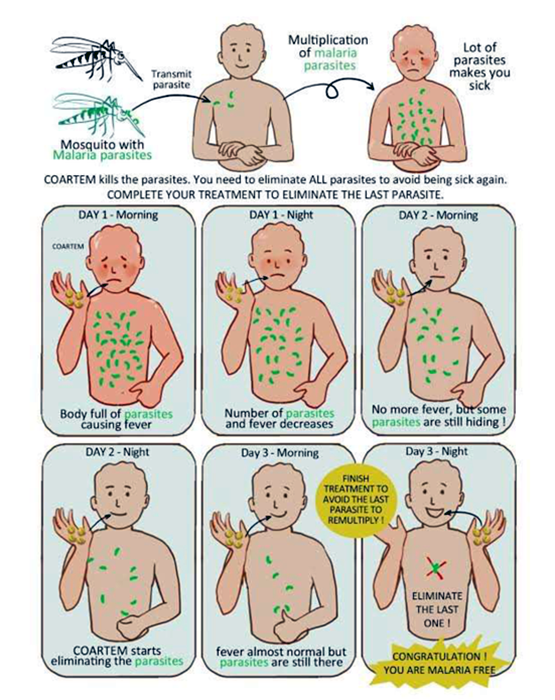
Washington, DC, January 12, 2017 (PAHO/WHO) - Luciano works in a gold mine in the Suriname forest area. Although he is young and strong, he had to stop working for several days when he was overcome by fever, chills and sweat. He had contracted malaria, a disease transmitted by mosquitoes. Although the country has drastically reduced malaria cases in the last 15 years, it still occurs in some areas, especially in the mining areas of District Sipaliwini, along the border area with French Guiana. The district also borders Brazil and Guyana.
Luciano followed the prescribed treatment to the letter and managed to overcome the disease. Adherence to the three-day, six-dose treatment was made easier by the fact that the package showed in drawings what happens to the body when taking the medication, and the consequences of stopping treatment halfway. The booklet included with the drug was developed by the Suriname Malaria Program and the Pan American Health Organization (PAHO).
"The drawings were made and tested with a group of miners to ensure the message was easily understood and promote the completion of malaria treatment," explained Yitades Gebre, PAHO Representative in Suriname.
Improving adherence to treatment was one of the main reasons to create the brochure. If treatment is not completed, antimalarial resistance can eventually render the treatment ineffective. Antimalarial resistance is a global threat that could leave the world without many of the treatment currently available to cure the disease.
The illustration initiative contributes to getting the correct message, in the right format, to the miners and other key populations at risk of malaria, in order to educate them to complete their malaria treatment.
"We seek to close the gap that exists in providing health instructions to different populations, many of whom may not fully read or write," said Laure Garancher, a PAHO Advisor seconded by the government of France." So far the illustrations have shown the potential to be effective, as people tell us, they can more easily understand the importance of not abandoning their treatment", added Garancher, who also is the graphic novel artist of the drawings.
The illustrations have several advantages: they can be understood by people regardless of their educational level; they are developed according to the views, interests and tastes of the target group; and they can facilitate community dialogue on sensitive issues by creating a space of trust.
Malaria has been virtually eliminated in the inland villages that previously had one of the highest transmission rates in the Americas. The disease has been reduced to less than 90 autochthonous cases each year with no deaths registered in 2014 and 2015. For these achievements, the country received the Champions Award for Malaria 2016 from PAHO.
The use of illustrations in communication materials in Suriname adds to a range of actions that the government is carrying out to eliminate malaria in hard to reach areas and populations at risk.




